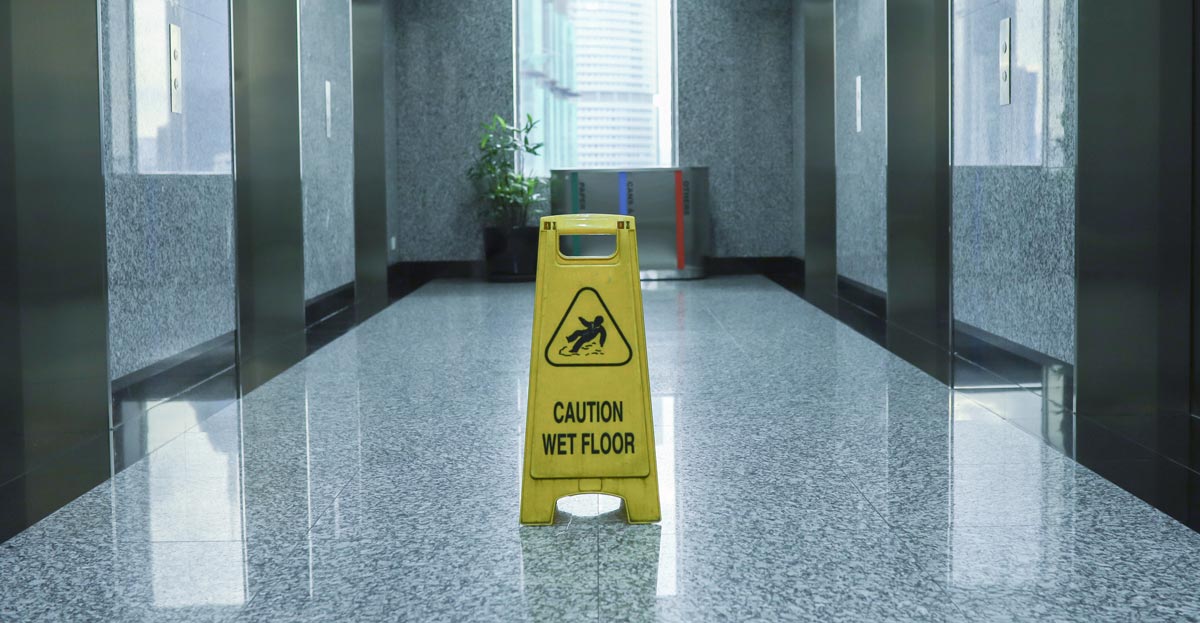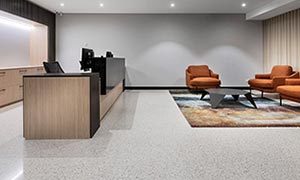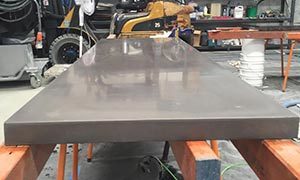By its nature, concrete is a strong and durable flooring option. This is why polished concrete floors can last for decades. These are also highly resistant to damage even when exposed to high volumes of foot traffic.
But while they require a much lower maintenance level compared to many other floorings, polished concrete floors still need some work to maintain. How well you care for your polished concrete floor can increase or decrease your floor’s lifespan by a decade or more.
Here are our tips on how to properly care for your polished concrete floor.
Things to remember when cleaning polished concrete floor
Before you start cleaning your concrete floor, it’s always a good idea to come up with a plan of action. First, examine the current condition of your floor and find out how often it needs cleaning. Do people use the concrete floor occasionally or frequently throughout the day? How much foot traffic does it get?
Second, identify the cleaning agents and equipment you will need to do the job. Is the floor area small enough to manage with a mop and a bucket? Or is it large enough to require the use of an automatic floor scrubber?
Once you know all of this, here is what you should do.
1. Set a regular cleaning and maintenance schedule.

Your maintenance schedule will depend on how much foot traffic your concrete floor gets on average. If it’s in an area that people frequent, you might want to have it cleaned more often.
For example, if your floor is in a small office dining area, it likely gets round-the-clock foot traffic. Other examples of high-traffic areas include kitchens and main entrances.
Concrete floors in more publicly-accessible commercial premises need an even more rigorous maintenance routine. A daily morning and evening cleaning schedule is a must. That will ensure polished concrete floors stay spick and span, no matter how many people walk on them.
You should regularly dry-mop your concrete floors to remove the usual dirt particles. You’ll avoid having dust, sand, and other types of debris accumulate on your over time. The longer you put off cleaning and maintaining your floor, the more dust or calcified debris you’ll have to remove later on. Moreover, larger quantities of these particles can abrade a concrete floor’s finish as they move across it.
You should also damp-mop your floor at least once a week. This should be done after the surface has already been dry-mopped.
2. Use the right tools and cleaning agents for your polished concrete floor.

It’s not enough that you have a maintenance schedule in place. You also have to have the correct tools and cleaning products to get the job done.
Remember that some household cleaning products and tools can actually damage reactive hard flooring surfaces such as concrete, engineered and even natural stone.
So for regular cleaning of concrete floors, it’s best to use warm water with a proper neutral-ph cleaning solution, applied with a cleaning tool made of microfibres or softer non-abrasive materials.
Tools
For manual cleaning, use a dust mop made of soft microfibres. This will help wipe away dirt particles without damaging the polished finish of your concrete floor. Most regular mops are made of harsher materials that can scratch or dull your floor’s surface.
Meanwhile, for machine-assisted cleaning, use automatic floor scrubbers with soft and non-abrasive pads. You can choose between two types of pads to fit your scrubber:
- White pads — Have softer textures that are suitable for cleaning high gloss floors
- Soft beige pads — Ideal for cleaning floors with sensitive surfaces
There are also other types of scrubber pads available, but many of them may not be suitable for cleaning concrete floors. These products tend to scratch or etch the floor’s surface.
Cleaning agents
For cleaning agents, always go with products with a neutral pH formulation. These can help suspend soil particles on your floor for easier removal. Remember not to let the solution dry on the surface to avoid having it discolour your concrete floor.
Our Cleaning Products
However, you don’t need to search far for appropriate concrete floor cleaning agents. Art of Concrete has every cleaning agent you need:
- PH Neutral Cleaner: $26.20 (1 Litre) Try this as a general-purpose solution. You can use it every to clean any kind of surface.
- Outdoor Cleaner: $35.20 ( 1 Litre) Removes stubborn plant sap or chlorophyll stains caused by tree bark, leaves or flowers from all natural and artificial stone surfaces.
- Active Clean: $35.75 (1 Litre) A special cleansing agent that removes stubborn residues such as calcium, soap scum, rust, and greasy residues from concrete-based floors. (Caution: Do not use this on polished marble or limestone.)
- Tile and Grout Cleaner: $22.80 (1 Litre) Use this to rapidly lift hard-to-reach dirt, oil and grease from tile and grout.
What to do
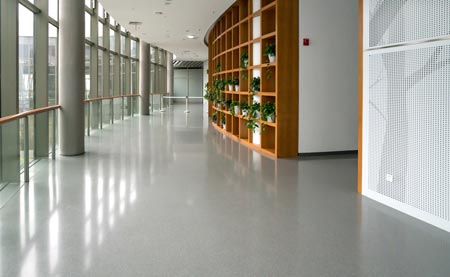
Here’s our checklist for cleaning and maintaining concrete floors:
- Dust mop your concrete floor regularly to remove dirt from its surface. This is important since particles such as sand, grit and dirt often act as an abrasive to your floor. They can easily ruin the clarity and lustre of a floor’s polished surface. You can use a microfibre pad to make sure that you’ll get even the smallest of dirt particles.
- If you’re going to wet mop your floor, remember to use only clean water and clean mops. For small areas, a mop and a bucket should be enough to do the job. But for larger areas, you might want to go with an automatic floor scrubber. Just make sure that it’s fitted with a nonabrasive pad so it won’t ruin the floor’s surface.
- When wet mopping, choose a neutral floor cleaner capable of suspending dirt. This will help make it easier for you to wash away particles that tend to build up on the surface. If these dirt particles were left on your floor, they will eventually wear away the surface and leave it discoloured.
- Wipe away spills and stains on your concrete floor as soon as possible, if not immediately. If you leave them on the surface for too long, it can ruin the polish and discolour your floor. This is especially true of liquids such as fruit juices, soft drinks, oils, wine, and urine.
- When using a cleaning agent, give the solution enough time to break down grease and other contaminants on your floor. If you mop the agent immediately after applying it, it won’t be able to remove grime from the surface properly.
- Make sure that your cleaning solution doesn’t dry on the concrete floor’s surface. Try focusing on a single part of the floor first and finishing the cleaning process. Once it’s complete, you can then move to the next area to continue your work.
What not to do
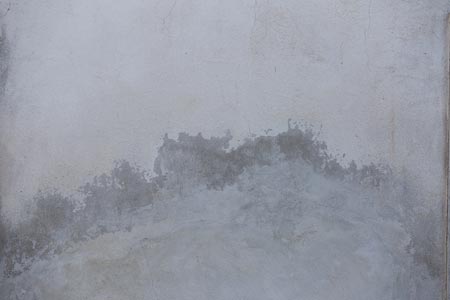
Of course, there are also several things you need to avoid to make sure you maximise your concrete floor’s lifetime.
- Don’t use ammonia, bleach, vinegar, hydrochloric acid, or any citrus solution to clean your floor. You should also avoid applying any cleaning agents that are either acidic or alkaline on the pH scale. These products can damage the surface of your concrete floor. To be on the safe side, only use neutral pH cleaners.
- Avoid using rubber products as these can leave permanent marks on the surface of your concrete floor. These include rubber-backed mats and rubber floor protectors. As an alternative, you can use felt floor protectors (e.g., for the ends of furniture legs) in place of rubber-based ones. Felt can help reduce the scratching on your floor’s surface.
- When removing dust and dirt from your concrete floor, avoid using a vacuum cleaner. These devices can be abrasive to your floor’s surface.
- Do not use steam cleaners since they can trap dirt on your floor’s surface instead of getting rid of them.
These are our easy tips on how to maintain your concrete floor. They are simple enough for you to be able to do on your own.
For easy reference, also download our cleaning guide here.
For assistance with serious damage or installation of your next polished concrete floor, why not contact us at Art of Concrete today? We’ll be happy to help.

